- Home
- About us
- Blog
- Shop
- Brands
- ALL Brands List
- Analog Relax
- Antipodes Audio
- Audio Solutions
- AudioByte
- AudioCircle
- Audiomica Laboratory
- Canary Audio
- Canor Audio
- Chameleon Audio
- Dan D'agostino
- Eversolo
- Ferrum Audio
- Fezz Audio
- Glanz
- HiFiMAN
- HoloAudio
- LAB 12
- LAIV
- LampizatOr
- Magico
- Mega Acoustic
- Monrio Audio
- Origin Live
- Phasemation
- Pink Faun
- PLiXIR
- Qualiton
- Reed
- Remton
- Revival Audio
- Riviera Audio
- Rockna Audio
- Sbooster
- Shelter
- Sigma Acoustics
- Signal Projects
- SOtM Audio
- SPEC
- Takatsuki
- Takumi
- Tedeska
- Tellurium Q
- Trafomatic Audio
- Tsakiridis Devices
- Volumio
- Sales
- Second Hand Deals
- Account
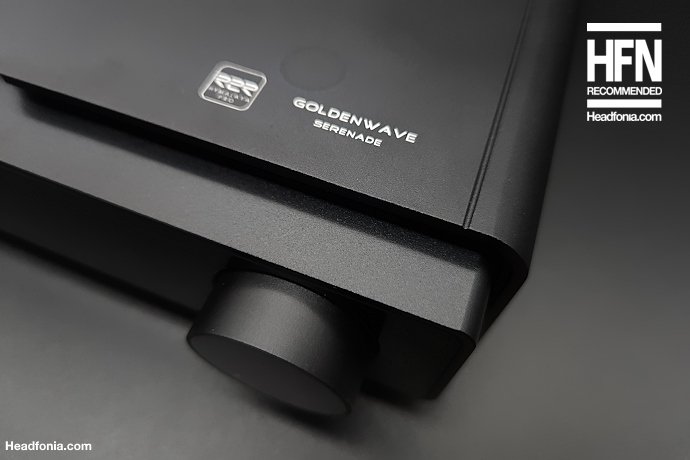
Hifiman Serenade Review by Headfonia
In this article we look at the Hifiman Serenade DAC/AMP, pre-amp and streamer.
Disclaimer: The Hifiman Serenade was sent to us free of charge in exchange for this review.
If you’re into personal audio, then you probably have some knowledge about the Hifiman brand. It was founded in 2007 by Dr Fang in New York to produce high-end personal audio products. Hifiman was the first brand to release a high-end portable audio player, the HM-801, which was like a catalyst for Reference Audio Players that we know today.
One of the many points that make Hifiman stand out is that they are a very innovative company, and they are constantly chasing the better, in every price range. They create different flavoured headphones, warm, neutral, and balanced, for every kind of audiophile out there. We’ve reviewed many Hifiman units in the past, and each time we get excited as if it’s the first time. Just type Hifiman in our search box and discover all of our Hifiman reviews.
For those of you who’d like to know more about Hifiman and their founder, there’s always this interview we did with him: https://headfonia.com/q-n-a-saturday-hifiman/
In this new Hifiman review, we’re looking at the Hifiman Serenade desktop DAC/AMP. I last time promised to keep my reviews short(er) and to the point, so let’s see how that turns out. Let’s get started!
Intro
The Hifiman Serenade actually is part of the cooperation between Hifiman and Goldenwave. If I am not mistaken I actually think Hifiman bought the Goldenwave company, but I could be wrong.
“By bringing GOLDENWAVE under HIFIMAN’s wing, we are embarking upon a new era for both brands, with products that feature the best of what each company has to offer, with music lovers ultimately being the beneficiaries.”
So far we have seen two new Goldenwave products: this Serenade and the higher end Prelude headphone amplifier. To keep things simple we will be calling this the Hifiman Serenade.
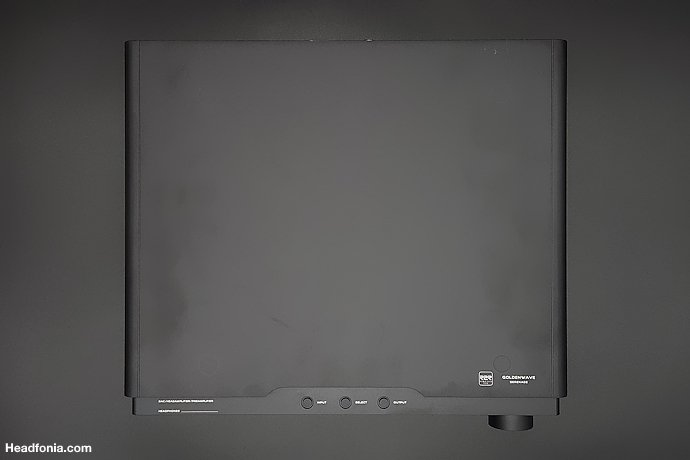
Hifiman Serenade
The Hifiman Serenade actually isn’t just a digital to analogue convertor and headphone amplifier. You can also use it as a streamer (more on that later) as well as a pre-amp, using the analogue outputs.
The Serenade is using Hifiman’s HIMALAYA PRO R2R DAC, a technology we now see in almost all of Hifiman’s DAC products. The HIMALAYA Pro is an R-2R or resistor-based modular chipset that is discrete-designed and based on an in-house FPGA algorithm. Hifiman states that their tech equals using double Burr Brown PCM1704K balanced connections, outperforming the PCM1704 in every way.
The Serenade features an XMOS XU316 USB chipset and offers up to DSD256 and PCM 32bit/386kHz decoding rates via USB. By using the Serenade’s FTP network input and bypassing the XMOS chip, you can get DSD512 and PCM 32bit/768kHz capability. Next to this USB and network input, the Serenade also offer the typical optical and coaxial inputs (DSD DoP64 and PCM 32bit/192kHz).
The Serenade has a Class A headphone amplification circuit, supplemented by a precisely matched, fully discrete transistor amplifier circuit. According to Hifiman, the Serenade because of tis inherits the noble tone of the Prelude amplifier, for less than $3,000 USD.
The Hifiman Serenade’s dedicated web page can be found here. You can buy the Serenade directly from Hifiman here or you can purchase it from one of their dealers. The selling price at the moment is $999 USD, and the product was launched with a $1,199 USD price tag as you can still see on Hifiman’s website.
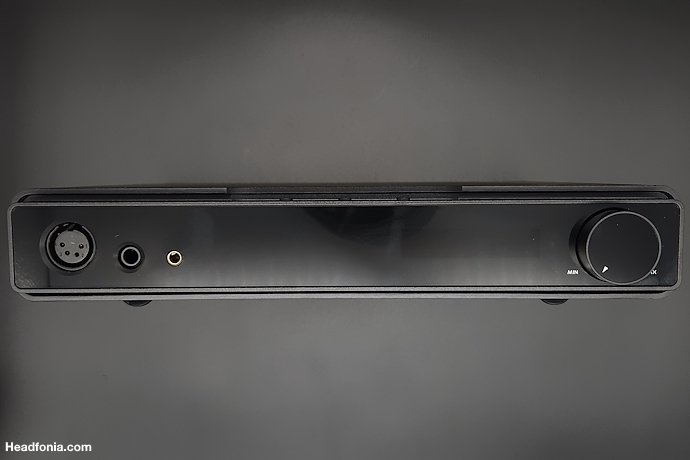
Specifications
- Frequency Response 20-20kHZ, +/- 0.1dB @ 1KHz
- SNR 110dB, 0dBFS @ 1KHz
- THD+N 0.0015%, -3dBFS @ 1KHz
- Balanced Output: 4000mW @ 32 ohms, 760mW @ 300 ohms
- Single-Ended Output: 2800mW @32 ohms, 510mW @ 300 ohms
- Line-out: 4.5V/XLR, 2.2V/RCA, 0dBFS @ 1KHz
- USB: PCM 32bit/384k, DSD64-DSD256
- Coaxial, Optical: PCM 32bit/192k, DSD DoP64
- LAN: PCM 44.1 – PCM 768k, DSD64 – DSD512
- Dimensions/Weight: 330x50x255mm, protrusions not included / 2.9kg
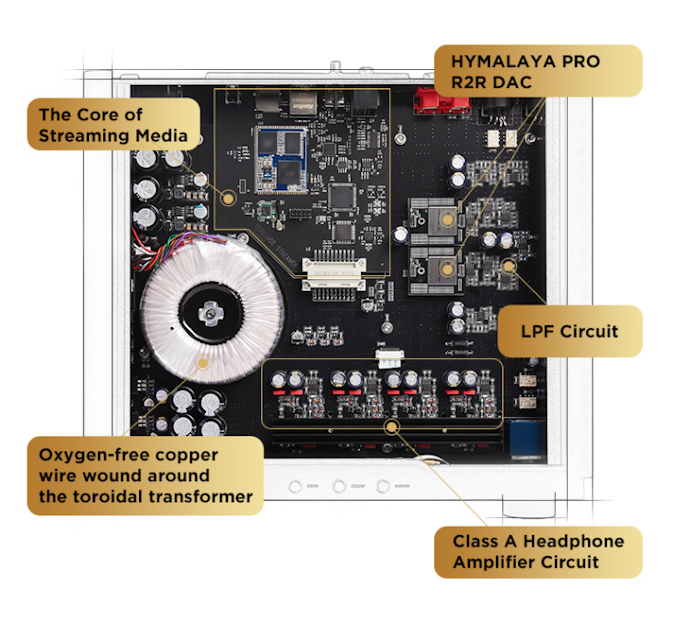
Box & Accessories
Looking at the box and the accessories, the package is not the most impressive. The Serenade comes in a sturdy cardboard box with foam on the inside, and as such it is perfectly protects the unit.
Accessory wise however there is not much to be found in this package. You get a power cable as well as a 1m USB-B to USB-A cable which allows you to get started right away. That’s it.
For $999 that is ok I guess, even though a supplied Optical or Coaxial cable would have been a nice surprise.
Design, Build Quality
The Hifiman Serenade measures 330 x 50 x 255 mm making it a medium sized desktop unit. It weighs around 2.9kg which is perfectly acceptable. The Serenade’s build quality is excellent, the days were Hifiman’s BQ wasn’t always the best are long gone and I couldn’t think of anything to improve here.
The Serenade looks and feels sturdy, it doesn’t move around on your desk and all of the connections and buttons are nicely finished. The aluminum chassis looks high-end and plugging cables in-and out as well as pushing the different buttons feels good. The volume control is small but precise, perfectly balanced and smooth to turn. I’m guessing it’s an ALPs one, but there is no mention of it anywhere.
I quite like the design of this unit. The curved aluminum chassis looks smooth and sexy and I really like the design of the front panel which sticks out more. This allows Hifiman to place some of the controls on the top panel. An excellent choice and design in my opinion. I also like the lay-out of the Serenade and even with all the connectors and buttons, you get a slick design which doesn’t look overly busy.
The Serenade to me is the kind of unit that disappears in your desk setup. With the option of setting the preferred brightness of the screen, the unit can either disappear or draw attention. I prefer the lowest setting as I don’t like shouty screens myself. It however is important where you put it in order to have access to all of its controls as well as in- and outputs. More on that in the usability part later in this article.
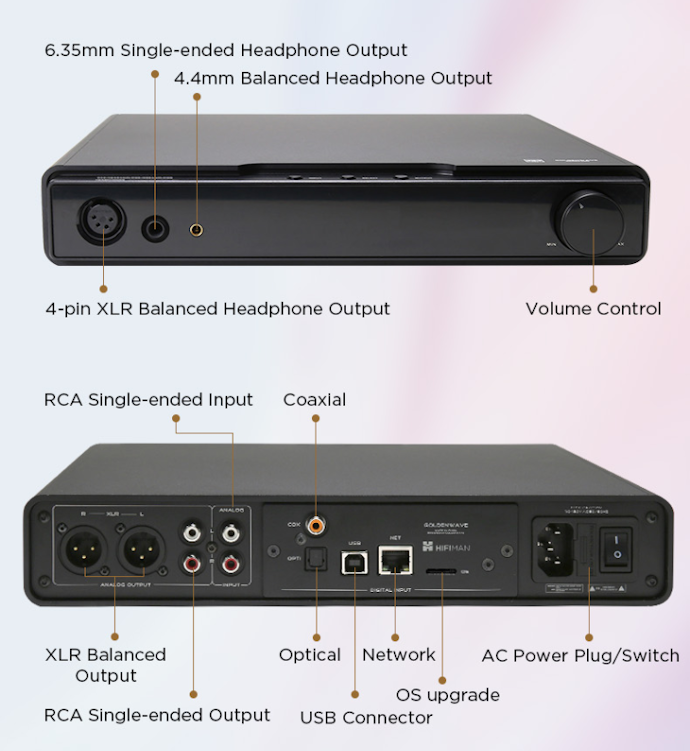
Lay-Out
Let’s start with the front panel. From left to right we have the balanced XLR-output, the standard 6.3mm single-ended output and the 4.4mm balanced output. The small and simple screen is positioned more to the other side, right next to the volume dial.
The front top part of the unit has 3 buttons in the middle: the input selector, the general select button (brightness and streamer power supply) and the output selector (DAC, Headphone Amp, Pre Amp).
On the back of the unit you from right to left have the power button, power plug, SD-card slot (upgrades), UTP connector, USB connector, optical/coaxial input, RCA input, RCA output and the XLR balanced output. It’s quite busy at the back, but the connection all have more than enough room. There are no issues having multiple cables plugged to the Serenade at the same time.
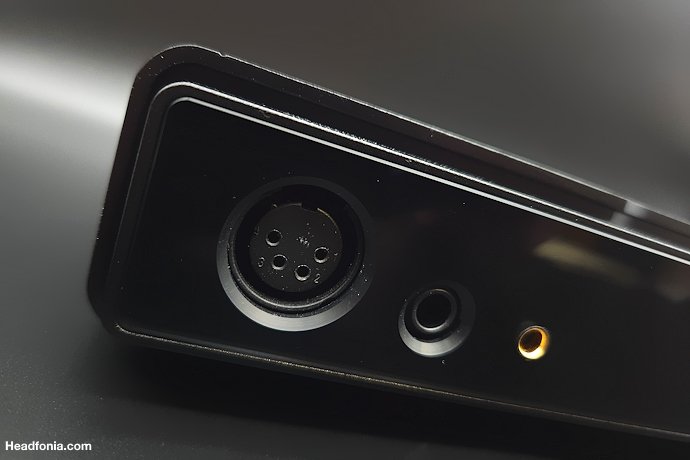
Usability
You can use the Serenade as DAC/AMP combo or you can use it as a DAC only and connect it to a headphone amplifier of your choice. I have seen people use the Serenade as a DAC in a Hifiman Serenade and Prelude stack, though I have not really used it like that myself.
Using the LAN input, I had no issues at all finding the Serenade in ROON, which makes streaming as easy as it can be. I however did not manage to stream directly from Tidal or Spotify on my phone and laptop to the Serenade. Luckily ROON has all of that covered as well. I am not sure I am doing anything wrong or if it just isn’t possible, but I couldn’t get it to work.
Connecting to the Serenade over USB, optical or Coax works perfectly. I did not really try to get the bridge function to work, which allows you to play files stored on a local NAS drive via your router to the Serenade. I wonder if people nowadays in this wireless era still do that. Let us know in the comments!
All-in-all the Serenade is easy to use, offering you a multitude of inputs and outputs. I quite liked using the analogue outputs in combination with my power amplifier in my speaker setup. But I have to admit that I prefer using the Prelude as a pre-amp even more. If you are planning to use the Serenade in a stack, we do advise to set it on top of your stack as it will be easiest to use the top faced buttons on the front.
Amplification wise the Serenade puts out 4000mW @ 32 ohms and 760mW @ 300 ohms in balanced mode, and 2800mW @32 ohms and 510mW @ 300 ohms in single-ended mode. That means it has plenty of power to drive all of the regular headphones on the market with ease. Note that the Serenade does not have a gain control, like its big brother. This might make it more difficult to use IEMs, which is not something I would personally use with this unit.
Usability wise, except for the streaming part from apps directly, I have no issues with the Serenade.
Sound Intro
I have used the Hifiman Serenade in multiple setups in my office as well as living room, but I have always used it as a DAC/AMP. The HIMALAYA DAC technology inside the Serenade is excellent and easily outperforms DACs found in other all-in-one units in this price class. The two connections I mostly used with the Serenade are the USB-input and the LAN-input (ROON).
Most of the time I have used the balanced XLR and 4.4mm outputs, with headphones such as the Hifiman Arya Stealth, the HE-1000 and the good old Audeze LCD2.1 (the original). I have also used harder to drive headphones such as the Susvara, Stealth and even the RAAL 1995 Immanis. Power-wise there are no issues at all and we’ll get back to the synergy part later in this article.
We in this part usually focus on how the companies are describing the sound and performance of their unit, but in this case there only is very little to be found on that. So let’s get started!
Sound General
The Hifiman Serenade is an amplifier that is very easy to listen to, and also one that is easy to review as its characteristics are so outspoken.
The Serenade at all times gives you a good amount of weight from top to bottom and you get a weighty sound no matter what headphone you are using. At the same time, the serenade does not exaggerate either. The Serenade is a warmer and smoother tuned amplifier with incredibly rich mids. The timbre is a pure pleasure to the ear. The Serenade is engaging, super musical and emotionally appealing. It’s not a clinical or analytical amplifier at all. That said, with already fuller and warmer tuned headphones, it might become too much.
The Serenade is a spacious and airy sounding amplifier, with a very rich yet natural tonality. The stereo imaging is excellent as well as the left/right balance. The presentation with its smoothness and softness is musical at all times. You get a nicely clean sound even if the clarity could be further enhanced. Sound stage wise, the Serenade is wider than it is deep. Looking at the price point, the depth is actually good, and the same goes for the layering. In regards to precision and refinement, the Serenade isn’t the ultimate performer but it doesn’t pretend to be either (think tonal and note extension, as well as decay). Again, at this price point the Serenade’s performance is nothing but impressive.
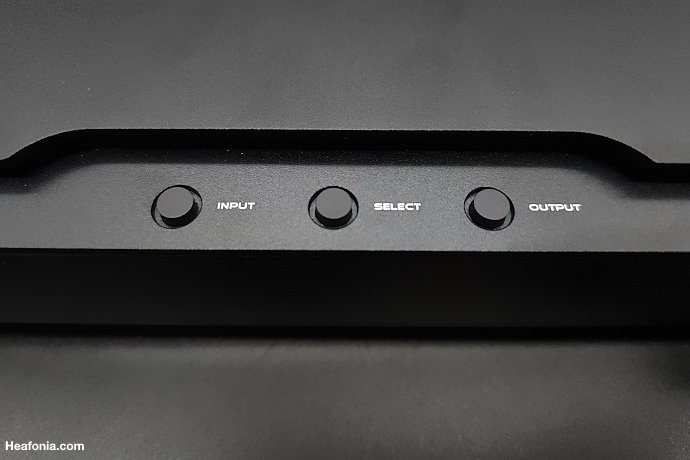
The Serenade is the type of amplifier that makes listening to your favorite headphones and tracks a pure pleasure. It’s soft on the ears, easy to listen to, powerful and oh so musical and emotionally engaging. It does everything very effortless, it never sounds forced or uncontrolled though the tightness, snappiness and PRaT are better in higher end amplifiers. At this level though, it’s pretty impressive.
As said, the mids are seriously impressive and musical with this amplifier, and the same goes for the vocals. These blend in nicely and they are perfectly positioned, with not too much front presence. The tonality is sublime and female vocals such as those of Billie Eilish or Melody Gardot will seriously impress.
I find the Hifiman Serenade to be a balanced and linear amplifier when looking at body and weight. Everything connects perfectly to each other. Bass is weighty, punchy but not overly present. The mids perfectly connect to the lower frequencies from a body point of view. The mids are probably the strongest point of the Serenade tout court. The treble follows in line with good body and softness. Treble is soft and easy to the ear, very forgiving. It will never offend or sound harsh but it has enough energy to keep things exciting. The overall presentation is easy on the ears and the Serenade can play an important role in softening down headphones that sound a little too hot or sharp for you.
Overall, the Hifiman Serenade offers good depth and layering in bass, mids and the higher frequencies but as said, the Serenade is not the ultimate technical performer. Dynamics, tightness and PRaT aren’t as spectacular as in higher end DAC/AMPS. It however makes up for that with its fullness, mid tonality/timbre, softer/warm presentation, vocal excellence, easygoingness and high emotional level. It’s such an incredibly musical amp, and a pure pleasure to the ear if you just want to enjoy your favorite tunes without getting the very last bit of precision. Throw vocals in to the mix and you easily reach musical nirvana.
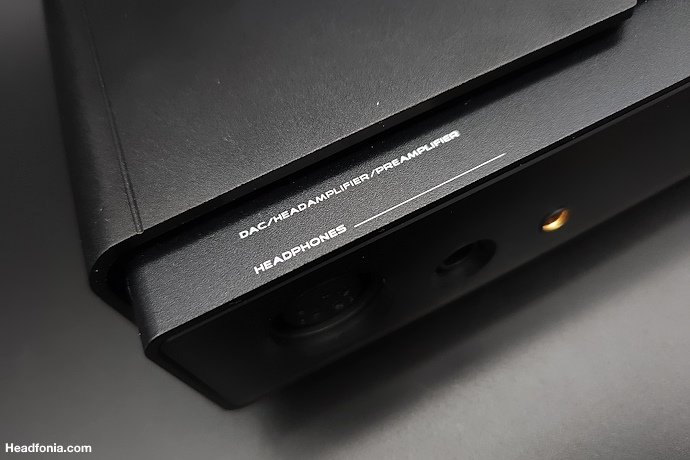
Synergy
The Hifiman Serenade is a DAC/AMP combo that works well with a whole series of headphones, no matter the driver technology. The only thing I would recommend here is to stay away from already warmer and slower sounding headphones as they might become a bit much.
The four headphones I listened to most with the Serenade are the Hifiman HE-1000, the Arya Stealth, the Audeze LCD2.1 and the Sennheiser HD 800s.
The Sennheiser HD 800S isn’t always the easiest headphone to match an amplifier with. It in general prefers tubes or warmer sounding solid state amplifiers, and the latter is the case here. The HD 800S already is a very spacious and highly technical performer and as such it matches perfectly with the fuller and warmer signature of the Serenade. The Serenade also does a really nice job in taming the highs, making the treble section easier on the ears. The Serenade will never get the highest technical performance from the Sennheiser, but it will transform the HD 800S in a softer, fuller, more musical and easier to listen to headphone for the masses. You get a good balance between technical performance and musicality, so it is a nice combo!
The Serenade also is a great companion for Hifiman headphones such as the Arya Stealth and the HE-1000 (all versions). My personal favorite of these two is the HE-1000 as I find the synergy with the Serenade to be exemplary. It has been quite a while since I enjoyed the HE-1000 this much. The sound stage width, airiness, energy, body, impact and musical delivery are just spot on for me. The HE-1000 luckily is a strong performer in regards to depth, energy and top end extension, so it perfectly matches the warmer, fuller and musical presentation of the Serenade. It is my favorite headphone to use the Serenade with, together with the Audeze LCD2.1.
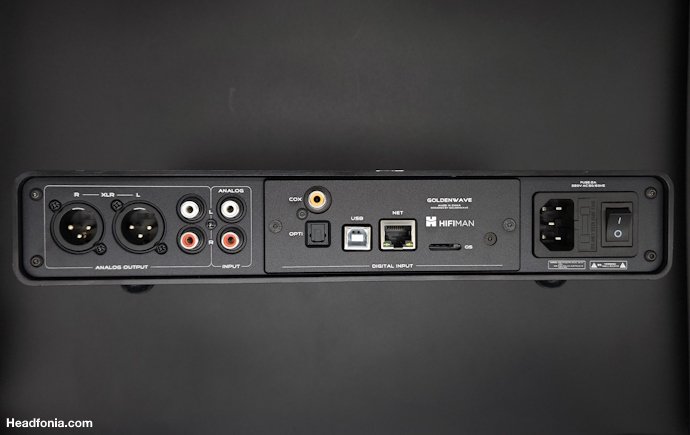
The Audeze LCD2.1 I am using is one of the original LCD2s with the vegan pads. The pads are completely worn out, but I still like using the Audeze from time to time. Luckily Dekoni is bringing back the vegan LCD pads, and I have a set on order. Anyway, the LCD2 was, and still is, a spectacular sounding headphone when powered correctly. The synergy with the Hifiman Serenade is excellent and you get an exciting, weighty, punchy and colorful sound with excellent mid focus. The (mid) timbre and vocals in this setup are superb and it’s just a musically engaging combo that wants you to keep listening to more and more of your favorite tracks.
TL;DR: The Hifiman Serenade has more than enough power to drive all your headphones. The recommendation is to not pair it with warmer and fuller sounding headphones. Combine it with headphones that can benefit from the Serenade’s characteristics (such as those mentioned above) and you will be a very happy listener. The Serenade won’t get you the ultimate precision and refinement, but it makes up for that with musicality and engagement. It’s such an addictive DAC/AMP.
Conclusion
When I first learned about the Hifiman Serenade, I wasn’t fully convinced that it would perform well but I was seriously wrong. For $999 USD you get a well-performing DAC/AMP unit that plays well with a whole series of headphones.
The Hifiman Serenade not only has all the power you need. It with its full, weighty, warmer and easy to the ear tuning also is musical and very engaging as well as addictive. Combine it with a technically strong headphone or one with a more mid-focus and the Serenade will seriously impress.
The Serenade is the kind of amplifier that puts musicality, smoothness and mid timbre as well as vocal excellence before technical top performance. It does all that in an effortless, musical and very addictive way and it lets you enjoy your music more than anything. If you want a higher analytical level, more precision and a more reference like neutral tuning, the Prelude might be more your thing.

All-in-all the Hifiman Serenade for under $1K is an excellent performer and in this price range there isn’t a lot of competition that outperforms it as a DAC/AMP with this kind of tuning. As such it is very easy to give this DAC/AMP our Recommended Buy Award. The Serenade now is featured on our Best DAC/AMP buy list here!
Well done Hifiman!
Summary
Pros:
- Musicality
- Smoothness and warmth
- Vocal tuning
- Mid timbre
- Powerful yet effortless sounding
Cons:
- Technical performance (Precision, Prat, Extension)
- Limited Dynamics
